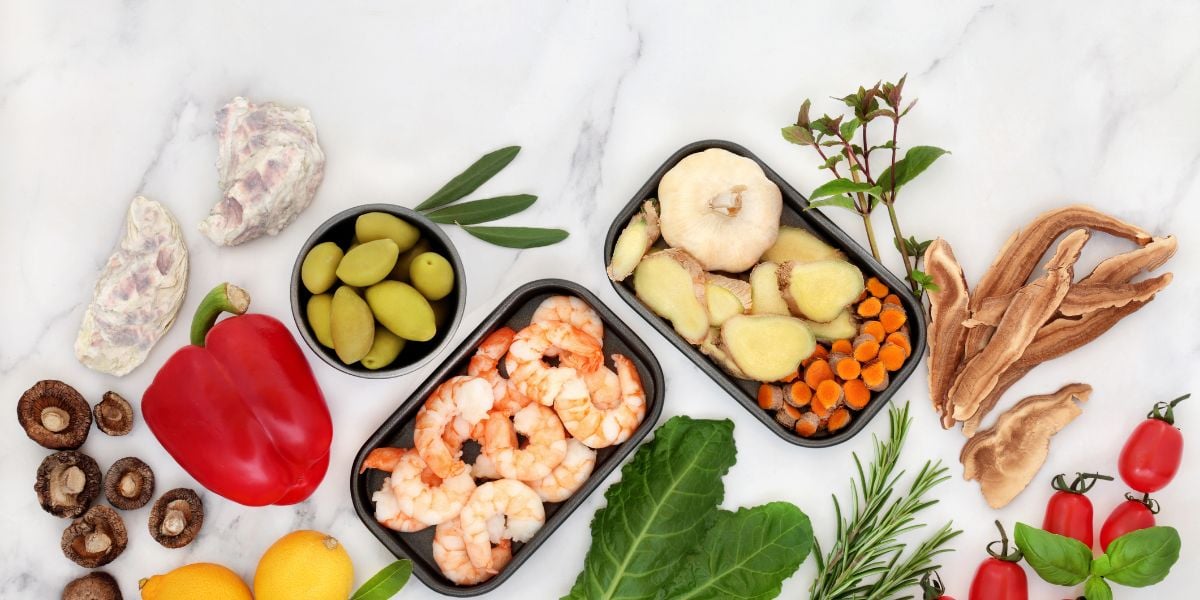In 1950, the US Food Exchange list was developed by the American Dietetic Associatio, the American Diabetes Association and the US Public Health Service to target meal planning problems.
The aim of this concept was to provide people with diabetes with the tools to incorporate consistency in their meal planning and include a wider variety of foods.
Carbohydrate exchanges are 15g per portio, which is different to the United Kingdom carbohydrate portions of one per 10g.
You should not change to another method of counting food values if you use the US Food Exchange as this may require changing your medication if you have diabetes.
What is food exchange?
The word exchange refers to the food items on each list which may be substituted with any other food item on the same list.
One exchange is approximately equal to another in carbohydrate, calories, protein and fat within each food list.
The last published version of the Exchange Lists for Meal Planning was published by the American Diabetes Association and the American Dietetic Association in January 2013. These food exchange lists can be used to assess serving sizes for each food group.
Diabetic exchange
A diabetic exchange diet is designed to allow you easy control over the amount of sugar and cholesterol you allow into your body. A successful diabetic exchange diet will help to control your weight, BMI (Body Mass Index) and your sugar levels.
It is necessary to carefully measure food in a diabetic exchange diet, and it is generally recommended to eat three meals and one snack per day.
The diabetic exchange divides foods into six specific groups, and measures food per serving size.
- Try the Food Exchange Calculator
A balanced diet will take the correct proportion from each food group, and your dietician will tell you the number of servings that should be eaten from each food group per day.
Food in the same group may be exchanged to give variety. Be sure to carefully measure or weigh each food and drink item.
How does the diabetic exchange work?
The diabetic exchange system is flexible and centred around selecting foods based around your calorie intake.
To work out your calorie level and how many servings of each food group you can have per day, you will need to calculate your BMI (Body Mass Index).
If you in the normal BMI range, you are generally allowed between 1,800 and 2,000 calories per day. For those in the overweight BMI range, this is reduced to roughly 1,600 and then between 1,200 and 1,400 for people in the obese range.
Upon working out your BMI and calorie allowances, you should then assess how much carbohydrate you can have in your daily diet.
This can be done by multiplying your daily calorie intake by .43 and then dividing that number by four.
Exchange = ([Daily Calorie Intake] * .43)/4
An example of this would be 1600 x .43 = 688 / 4 = 172 grams of carbohydrate, which would be your daily allowance.
Diabetic Exchange food groups
This list is certainly not comprehensive, but it does contain a wide variety of foods that conform to the diabetic exchange diet. Some foods may not be included that are perfectly alright to eat, but patients on a diabetic exchange diet should avoid eating foods in the ‘ Prohibited List ’.
However, because a food does not appear in the prohibited list, it is not necessarily alright to eat.
Bread and Starch
Each serving from this list contains 15 grams of carbohydrate, 0-3 grams protein, 0-1 gram fat and 80 calories.
- 1/2 cup of cooked lima beans
- 1/2 cup of cooked pasta
- 1/2 a 6-inch piece of pita bread
- 1/2 cup of mashed potatoes or a small jacket potato
- 1/3 cup of cooked rice
- 1/2 cup of cooked green peas
- 1/2 a hamburger or hot dog bun
- 2 rice cakes
- One 6-inch round small tortilla
- 1/2 cup of cooked winter squash
- 1/2 3-inch bagel
- 1 slice of bread (not oversized)
- 1/2 cup of cooked cereal
- 1/2 cup of corn or 1 medium corn on the cob
- 6 saltine crackers / three 2-1/2-inch square crackers
- 1 small dinner roll
- 1/2 cup cooked dried beans (I.E; kidney, pinto, lentils, chick peas, white, navy)
- 1/2 an English muffin
Fruit
Each serving from this list contains 15 grams of carbohydrate, no grams of fat or protein and 60 calories.
- 1 small apple (c. 3 inch)
- 1 small (c. 5 inch) banana or 1/2 a 9-inch banana
- 17 small or 12 large red or white grapes
- 1 kiwi fruit
- 1 cup of melon (cantaloupe, honeydew, etc.)
- 1 small orange (c. 3 inch)
- 1 medium peach (c. 3 inch)
- 1/2 large pear (c. 4 inch)
- 1/2 cup of tinned pineapple
- 2 plums
- 3 dried prunes
- 2 tbs. of raisins
- 1-1/4 cup of whole strawberries
- 1-1/4 cup of cubed watermelon
Vegetables
To conform with the diabetic exchange it is possible to have one cup of raw or 1/2 cup cooked portion of most vegetables.
- Asparagus
- Green beans
- Broccoli
- Cabbage
- Carrots
- Cauliflower
- Celery
- Collard greens
- Cucumber
- Eggplant
- Green beans
- Kale
- Mixed vegetables (less corn and peas)
- Mushrooms
- Onions (Red, white)
- Pea pods
- Peppers (Red, yellow, green)
- Radishes
- Salad greens (lettuce, watercress, spinach)
- Summer squash
- Tomatoes (fresh or tinned)
- Turnip greens
- Turnips
- Zucchini squash
Dairy
- 1 cup of skimmed, 1-percent, or 2-percent milk
- 1 cup of non-fat plain or sugar-free yogurt
- 1/3 cup of dry non-fat milk
- 1 cup of skimmed or low-fat buttermilk
Meat or Meat Substitutes
- 1/4 cup of canned tuna, salmon
- 1 ounce of chicken (less skin)
- 1 large egg or 1/4 cup of egg substitute (Keep under 3 per week)
- 1 ounce of fish (not breaded, fried)
- 1 ounce of lean beef or pork
- 1/4 cup of low-fat cottage cheese
- One 1-inch cube or 1 ounce of low-fat solid cheese
- 1/2 cup of tofu
- 1 ounce of turkey (less skin)
Fats
- 1/8 portion of a medium avocado
- 1 Tablespoon of regular cream cheese or 2 tablespoons of low-fat cream cheese
- 1 Tablespoon of regular margarine or 2 tsp. low-fat margarine
- 1 Tablespoon of regular mayonnaise or 1 Tablespoon of low-fat mayonnaise
- 6 almonds or cashew nuts, 10 peanuts, or 4 halves of pecan nuts
- 1 Tablespoon of oil, such as canola, corn, or olive oil
- 2 Tablespoons of peanut butter
- 1 Tablespoon of regular salad dressing or 2 Tablespoons of low-fat salad dressing
Prohibited List
These are the foods it is best to try and avoid.
- Cakes
- Candy
- Cookies
- Ice cream
- Jelly and jam
- Pastries
- Pie
- Regular fizzy drinks
- Sugar-coated cereals
- Sweet rolls
Foods and beverages containing:
- Corn syrup
- Dextrose
- Fructose
- Glucose
- High fructose corn syrup
- Honey
- Maltose
- Molasses
- Sucrose
- Sugar (brow, corn, powdered)
- Syrup



